Experience the Tower of London with Authentic Beefeater Guides
Today, the Tower of London might seem like a charming castle dropped smack down the middle of a modern city. That wasn’t always the case during its 900+ years of British history. Its purpose was to awe and intimidate royal subjects and enemies. Over the centuries, it was also a place of death and torture.
You can learn all about it and its famous residents during the Tower of London Beefeater tour when you visit London. This tour is a must-do if you’re a history buff like me or just love to learn more about British history. Here is what you need to know before you go.
History of the Tower of London
William the Conqueror started to expand his London fortress with a new and imposing stone tower in the 11th century after his victory at Hastings in 1066. Partly to intimidate and awe Londoners and partly to keep them out. The new structure took about 20 years to complete using whitewashed stones imported from France. It’s where the famous White Tower got its name. The current design of the whole complex results from additional expansions over the years.
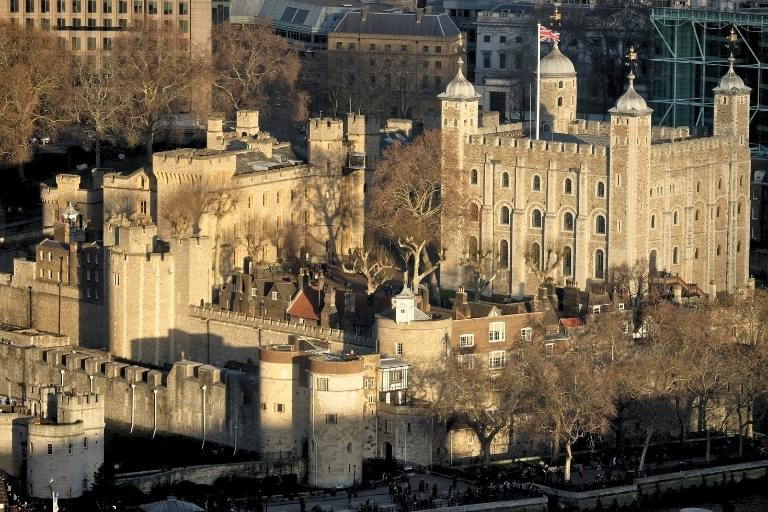
The Tower has played an important role in England’s history since its beginning. It was a royal palace, a prison and home to a menagerie of wild animals. The complex also housed the royal mint, a records office, an armoury and barracks for troops.
The Tower of London was both a place of luxury and misery. Many Londoners, including royals and commoners, have lost their lives here. Their heads often adorned the gates as a grim warning to everyone else. Treason was usually the name of the game, and the stakes were very high. Whatever their crime, they all arrived the same way – down the River Thames and through the Traitor’s Gate. Upon arrival, the Yeoman Warders took them to await their fate, which usually meant death at the place of execution.
🎟️ London city pass
Save time and money with the London City Pass, which includes:
- Valid for 1 to 5 days
- Access 100+ London things to do including Tower of London, Tower Bridge, Westminster Abbey and more
- App with attraction information, itinerary planner and city map
Four Queens of England have entered the gates as prisoners. Two of them were Henry VIII’s wives – Anne Boleyn and Catherine Howard – the others were Jane Grey and young Elizabeth Tudor. Only one of them managed to walk out alive. In case you’re not a history buff, it was Elizabeth, Henry’s daughter with Anne Boleyn. She went on to rule England for 44 years!
Edward IV’s two sons – often referred to as the Princes in the Tower – also met their tragic end at the Tower of London. The boys disappeared one day in 1483 while in the care of their uncle. The uncle, suspected of their murder, eventually became Richard III. The younger brother was only nine years old. Two skeletons matching the boys’ age when they disappeared were unearthed in 1674 and tested in 1933, adding credibility to this story. Recent discoveries and evidence might refute that story, but historians still argue about the boy’s fate.
Yeoman Warders – why are they called Beefeaters?
Yeoman Warders, the Tower’s official guardians, became a staple during the reign of Henry VII. Why are they called Beefeaters? Well, as the royal bodyguards, they lived and travelled with the king and enjoyed special privileges. One of those privileges was access to the king’s table. As the story goes, the guards received beef portions as part of their pay and had unlimited access to the meat at the table. Hence, they became known as Beefeaters. Some Beefeaters today happen to be vegetarian, which makes the nickname a bit ironic.
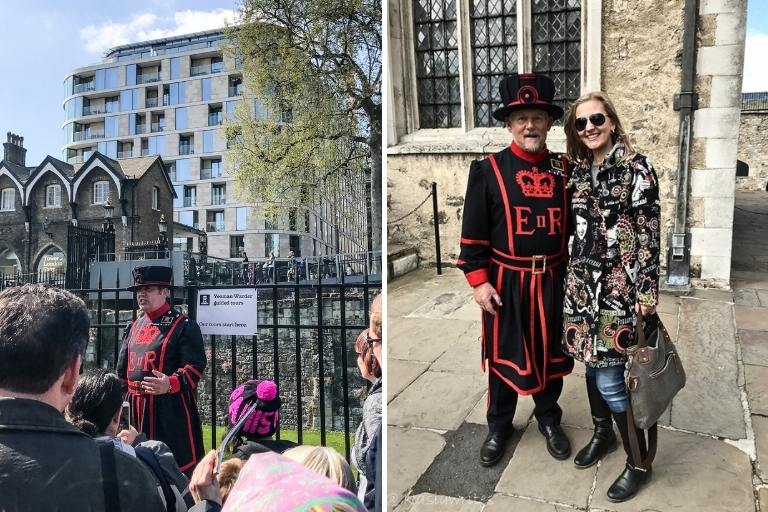
The Beefeaters became a permanent staple at the Tower to guard it. The traditions of this elite guard date back centuries. Their primary role was to look after prisoners and the crown jewels. It was a post of privilege and honour. Today, 32 Yeoman Warders plus one Chief Warder live at the Tower. To become eligible for the Yeomen Warder post, you must be retired from the Armed Forces with at least 22 years of service, reach the warrant officer’s rank, and hold the Long Service and Good Conduct medal.
If you’re wondering if there were any lady Beefeaters at the Tower, the answer is yes. In 2007, the first female Yeoman Warder, Moira Cameron, was appointed, breaking centuries of male exclusivity in this role. Since then, she has been joined by two other women who serve as Yeoman Warders at the Tower of London.
Beefeater tour of the Tower of London
While today, their role is mostly ceremonial, the Warders also act as greeters and guides and carry out the daily opening ceremony known as the Ceremony of the Keys. They also do tours for the visitors. The Beefeater tour of the Tower of London is an experience unlike any other. After all, this is their home, and they know the place like the back of their hand. The Tower’s Yeoman Warders offer tours every half hour. Unlike some private Tower of London tour options, there is no additional cost on top of your entrance ticket to take them.
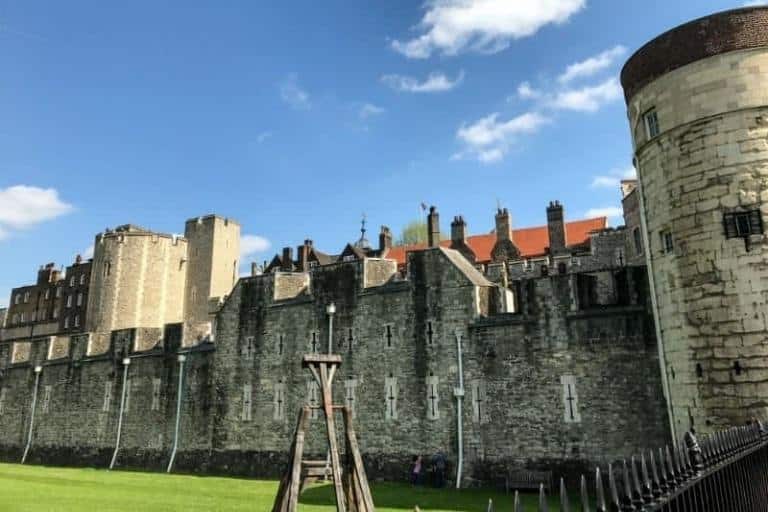
I was very excited to visit the Tower of London and even more so at the opportunity to partake in the Beefeater Tower of London tour. Maybe it was the history nerd in me or the fact that the Tower has such a significant past. Either way, my visit here was a highlight during my London trip. I recommend it to everyone as it’s one of London’s most popular attractions.
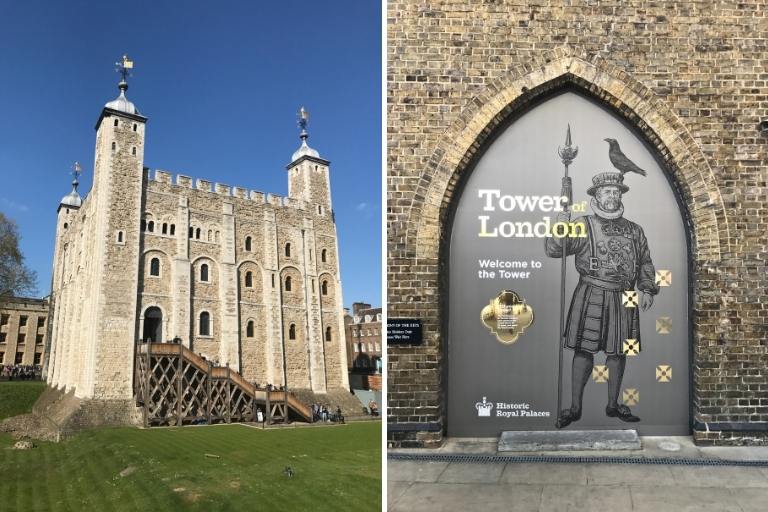
My experience started with a guided tour by one of the Yeomen Warders named John, an expert guide who knows the Tower inside and out. He entertained us with educational and insightful tales of the tower’s history for about an hour. The Beefeaters, it seems, are also great storytellers and offer many interesting details about their home. Unlike the busy standard tours, our small group had more chances to ask questions.
The Tower of London tour
John, like the rest of the Warders, lives on the premises. The Warders and their families rent apartments in the complex, a tradition dating back to the 13th century. There is also a doctor on the property and a chaplain who looks after the chapel. There is even a special pub here, reserved only for the Warders.
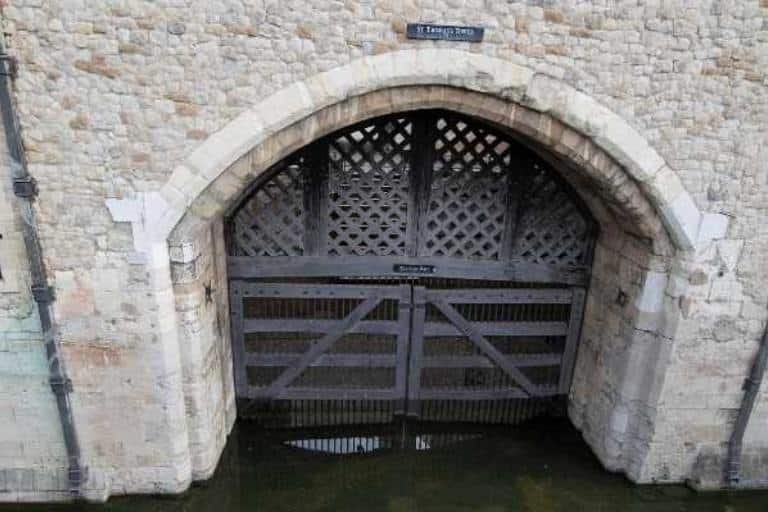
Our tour included colourful stories of the Traitor’s Gate, the Bloody Tower and the many ghosts of the Tower of London that supposedly make an occasional appearance. With the many laughing and happy faces around me, it was hard to imagine this place as a place of death and torture. After the tour, you get free time to explore at your own pace.
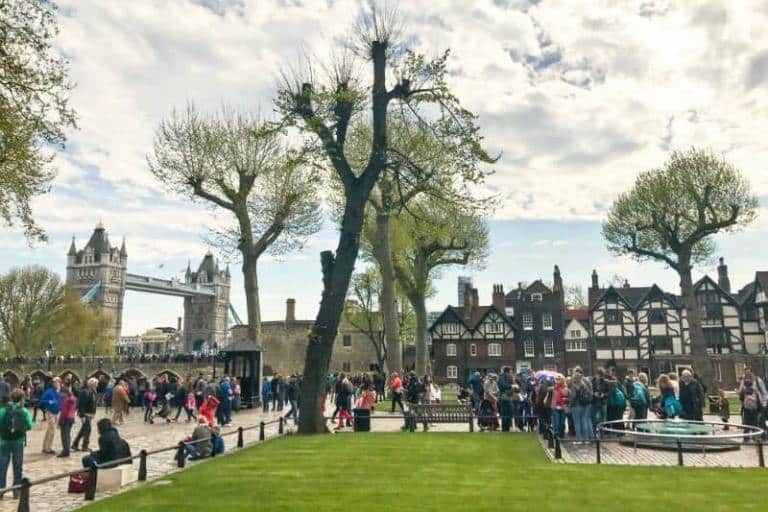
I recommend a quick visit to the tower exhibition about torture and a stop in the gardens. There is a memorial to those executed here, and it’s a sombre reminder of the Tower’s dark past. While today it’s a pleasant spot, it wasn’t always so. The execution site has seen many famous heads roll.
St. Peter ad Vincula
The chapel at the Tower of London is accessible only by being part of the Beefeater tour. As we entered, John asked us to sit and be respectful before he told us its history. The church still holds religious services as it has for centuries.
As the story goes, Queen Victoria’s decision to restore the chapel led to the discovery of many headless corpses beneath the floor on which we were seated. I must admit that I had a few unpleasant scenarios that crossed my mind as I tried to picture the discovery. The remains have since been respectfully reburied behind a marble slab, but that didn’t stop the little hairs on the back of my neck from standing up.
Branding someone a traitor meant that his or her body didn’t warrant a proper burial after death. Traitors’ heads often adorned the spikes at the London Bridge, while their corpses ended up beneath the church’s floor like a makeshift cemetery.
Other things to see at the Tower
The prisoners held at the Tower of London experienced various ways of confinement. One’s crime and social status often played a deciding factor in how their imprisonment looked like. While some languished locked up in the dungeons, others suffered in solitary confinement. Those of higher stature and wealth had more freedom to move around the property, with some even having servants at their disposal.
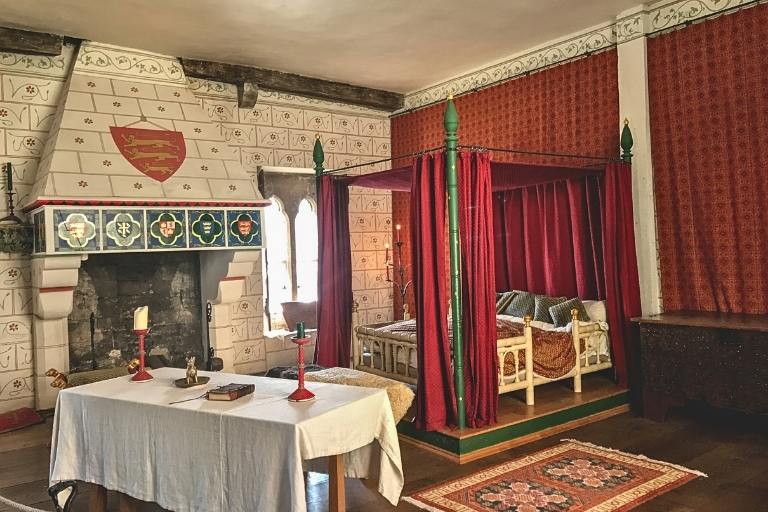
You can tour the Beauchamp Tower to the west of Tower Green, where you’ll find graffiti carvings of some famous prisoners, including Robert Dudley and his brothers. The tower, built around 1281, has housed prisoners for centuries and provides a deep connection to the past.
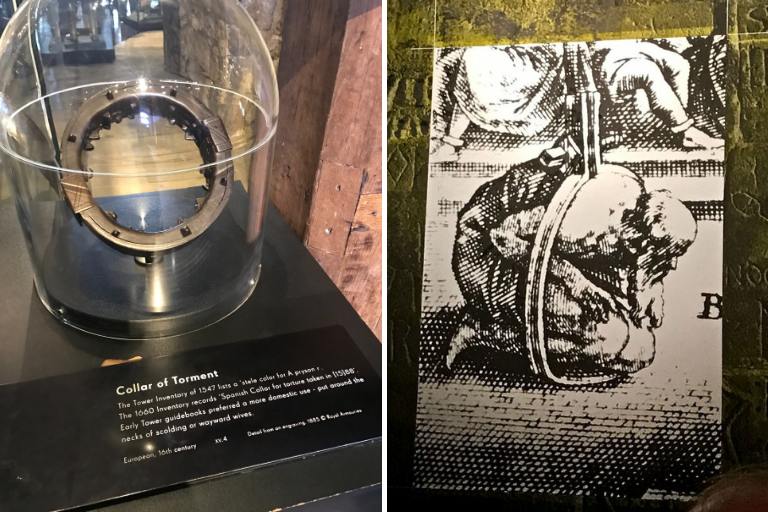
For an exhibition about torture methods and instruments used at the Tower, head over to the Lower Wakefield Tower. Even though the various devices are replicas of the originals, they still provide a very grim picture of the pain inflicted on many tortured here.
Royal Armouries Collection
For a glimpse of the military armour of the royals, head over to the White Tower. From Henry VIII’s tournament armour to the gilded ones of Charles I and James II, the Line of Kings will impress you. While it might be hard to imagine Henry fitting into the fancy silver armour with fine engravings, we should remember that he wasn’t always as large as he was in his later life. The medieval palace section shows how royals once lived.
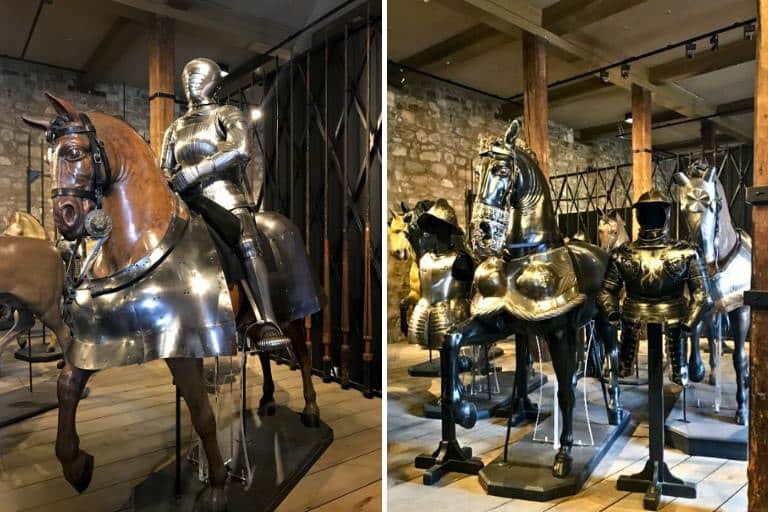
Tower of London crown jewels
For a less sombre experience, head over to see majestic crown jewels still used in present-day ceremonies. The jewels have been stored and displayed here since 1661. As the Tower of London was the most secure stronghold, many valuable royal objects found their way here over the years. Unfortunately, photos were not allowed inside for security reasons.
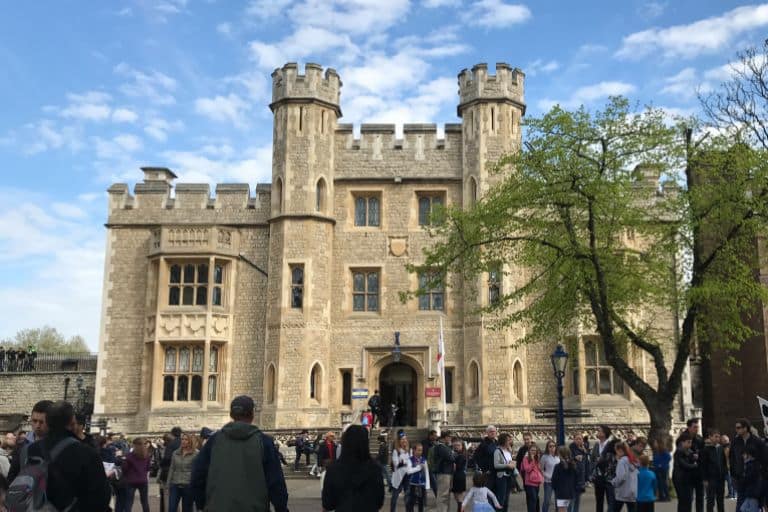
The world-famous collection of 23,578 gemstones, displayed in glass cases, dazzles visitors thanks to strategically positioned lighting and settings. You can also learn about the different pieces, how they are used during royal ceremonies and their symbolism. The impressive coronation regalia and the spectacular crown jewels are a must-see.
Animals at the Tower
The Tower of London tour is also a great way to learn about the many animals that lived here. For over 600 years, the Tower was home to lions, tigers, monkeys, zebras, elephants, ostriches and even kangaroos. A polar bear once lived here, too, chained but allowed to fish in the Thames. Various visiting dignitaries bestowed wild animals upon the king, a common practice in European courts of the day.
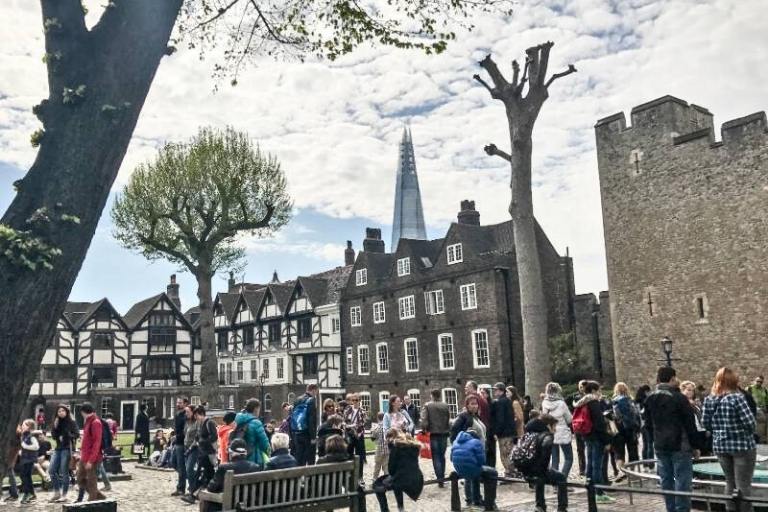
Exotic animals, especially those not native to the land, became objects of curiosity of the court and a monarchy’s status symbol. During the 19th century, the animals found a new home at a newly created zoo in Kensington Gardens, ending their presence at the Tower.
Much like the yeomen of the guard, the ravens have had a long presence at the Tower. The Tower had been their home for as long as anyone can remember. According to the legend, the Tower of London and the entire kingdom will fall if the ravens ever leave the fortress. Today, seven ravens live at the Tower. Under the care of the Ravenmaster, the birds eat an assortment of raw meats twice a day, with a special treat of biscuits soaked in blood. Mmmmm. Nothing but the best.
Visitor information
The Tower of London is easily accessible and is located near several metro stations. Check out the official site for how to get here.
Opening hours
The Tower of London is open daily except December 24-26 and January 1. Buy your entry ticket ahead of time so you can skip the long line at the main entrance.
| Season | Days | Opening Hours | Last Admission |
|---|---|---|---|
| March 1 – October 31 | Tuesday – Saturday | 9:00 am – 5:30 pm | 5:00 pm |
| Sunday – Monday | 10:00 am – 5:30 pm | 5:00 pm | |
| November 1 – February 28 | Tuesday – Saturday | 9:00 am – 4:30 pm | 4:00 pm |
| Sunday – Monday | 10:00 am – 4:30 pm | 4:00 pm |
Tickets and prices
Donation prices include a 10% optional contribution to support the conservation of the Tower.
| Ticket Type | No Donation | With Donation |
|---|---|---|
| Adult (18–64) | £35.80 | £39.50 |
| Child (5–15) | £17.90 | £19.80 |
| Child (under 5) | Free | Free |
| Young person (16–17) | £17.90 | £19.80 |
| Senior (65+) | £28.50 | £31.40 |
| Full-time student (18+) | £28.50 | £31.40 |
| Disabled visitor | £28.50 | £31.40 |
| Disabled carer/companion | Free | Free |
| Group adult (15+ people) | £33.00 | N/A |
| Group child (5–15) | £16.50 | N/A |
| £1 ticket (benefit recipients) | £1.00 | N/A |
| Tower Hamlets resident | £1.00 | N/A |
Booking tips
- Advance booking is recommended, especially during holidays and weekends.
- £1 tickets are available for those receiving benefits like Universal Credit.
- Tower Hamlets residents can purchase £1 tickets on-site with proof of address.
- Group rates apply to bookings of 15 or more people.
For more details or to purchase tickets, visit the official Tower of London ticket page.
Final thoughts on the Beefeater tour of the Tower of London
Seeing the Tower of London was on my must-see list of historic places for a long time. I knew that I had to see it when I got to London and it didn’t disappoint. Being in a place with so much history is amazing, but it also makes the tragic events that occurred here so much more real. It definitely feels very immersive, especially when you see and hear the Yeomen Warders who have been part of the history here for centuries.
The admission is quite steep, so if you plan on visiting a few other tourist attractions, consider getting the London Pass that includes admission to the Tower. The Beefeater tour is part of the ticket, so you don’t have to pay more to enjoy it. I think if you love history and want to walk in the footsteps of the likes of Henry VIII, Anne Boleyn or Queen Elizabeth, then you’ll love this experience.







